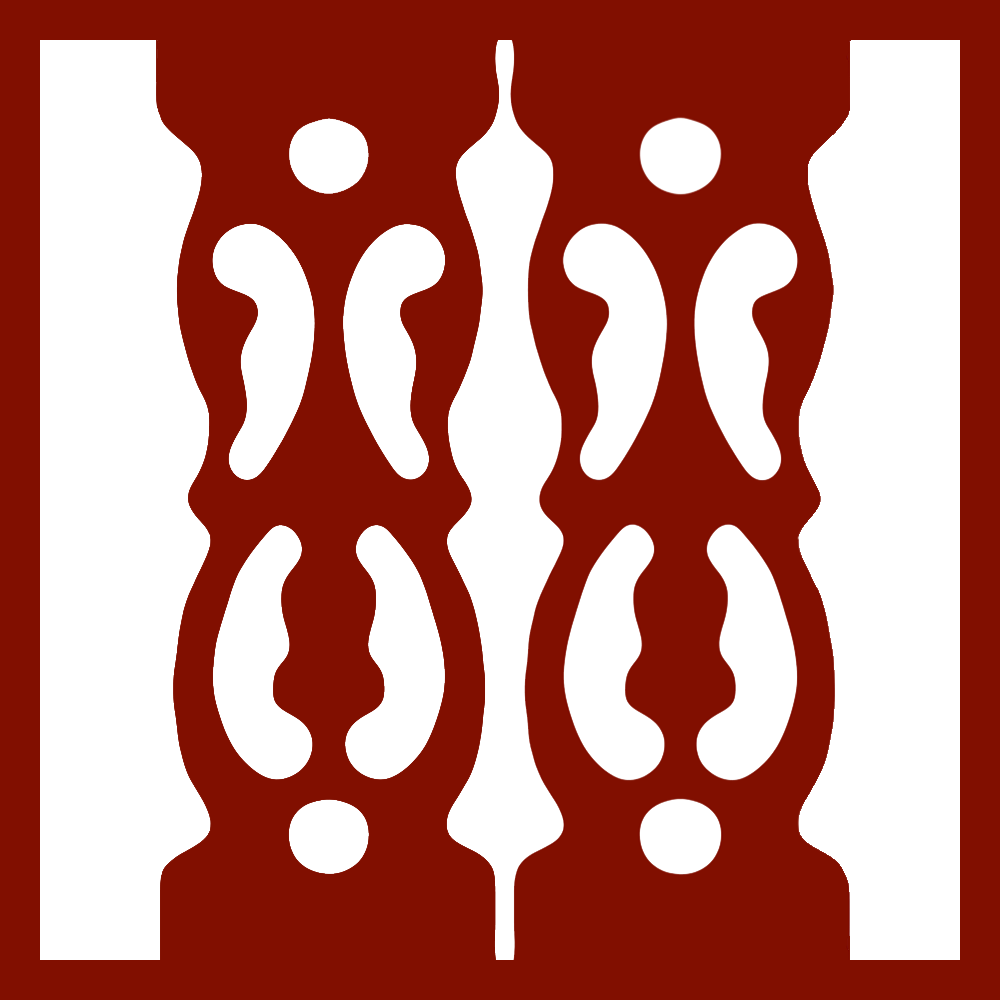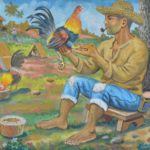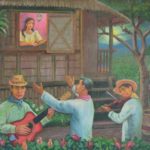Max Adlao was born in 1925 the day after Christmas on the small, little known island of Maria Siquijor, of Negros Oriental died 2009. Max remembers he first started to draw even before he went to school,using, on the sly, the crayons and pencils of elder brother David. By the time he reached high school, enrolled in a trade school on the mainland 15 kilometers from Dumaguete City, he always had some coins juggling in his pocket earned from drawing chalk illustrations on the backboard to animate the day’s lesson. His teacher’s paid him 1 centavo for each drawing. Later, that rose to P5 per by the time he was in his second year, when he occupied the exalted position of backdrop painter for the auditorium stage at the big school events. Max would drop off with 1st prize at the town’s Christmas lantern competition, which ratified him as undisputed school celebrity. He would also, in 1957, win 2nd prize at the United Drug art competition. His drawing hand came in handy during the Japanese occupation, his only means of livelihood. He would buy cartolina, cut them into a hundred pieces, and transform them into playing cards, which were in great demand.After the war, Max took a correspondence study course from the London School of Cartooning of Cleveland, Ohio. Max fared even better in Davao City, when in 1951, a cinema firm there hired as resident artist. He would paint the faces and figures of the leading actresses and actors of the day until the mid-80s, a career that spanned 35 years. In 1985, he got his first break to interpret a 9-foot sculpture of a Bagobo warrior, for shich he was paid P60,000.Confident he was ready for a solo, he mounted a one-man exhibit at the Davao Central Bank in 1987, followed by another year, at the Del Rosario Art Gallery in Davao City. Invited to Dortmund, Germany, in 1992, he stayed awhile there, doing commissioned portraits. In, 1995, Max received several important local commissions, such as a Dusit Hotel Nikko 4 x 8 mural, and Bayanihan mural at Security Bank, Ayala. He mounted his third solo at the Ayala-Alabang Country Club in 2002. Painter Danny Sillada, with whom Max collaborated to do 6 x 10 foot mural ‘400 Years ofChristianization ‘for Bishop Tom Yalung, refers to him as ‘Maestro Maximum light’. His folk genre is characterized by wit the inclusion of much folk detail, a propensity of many folk artist worldwide, such as the American painter known as ‘Grandma Moses’. May took 3rd place at the National Centennial Commission’s Supreme Court of the Philippines National Art competition.
-
Sabungero
18″ x 24″
Oil on Canvas
2004
SN#75447
-
Fish Vendor
18″ x 24″
Oil on Canvas
2002
SN#67955
-
Harana
24″ x 30″
Oil on Canvas
2005
SN#75449
-
Fishing
24″ x 30″
Oil on Canvas
2005
SN#71746




